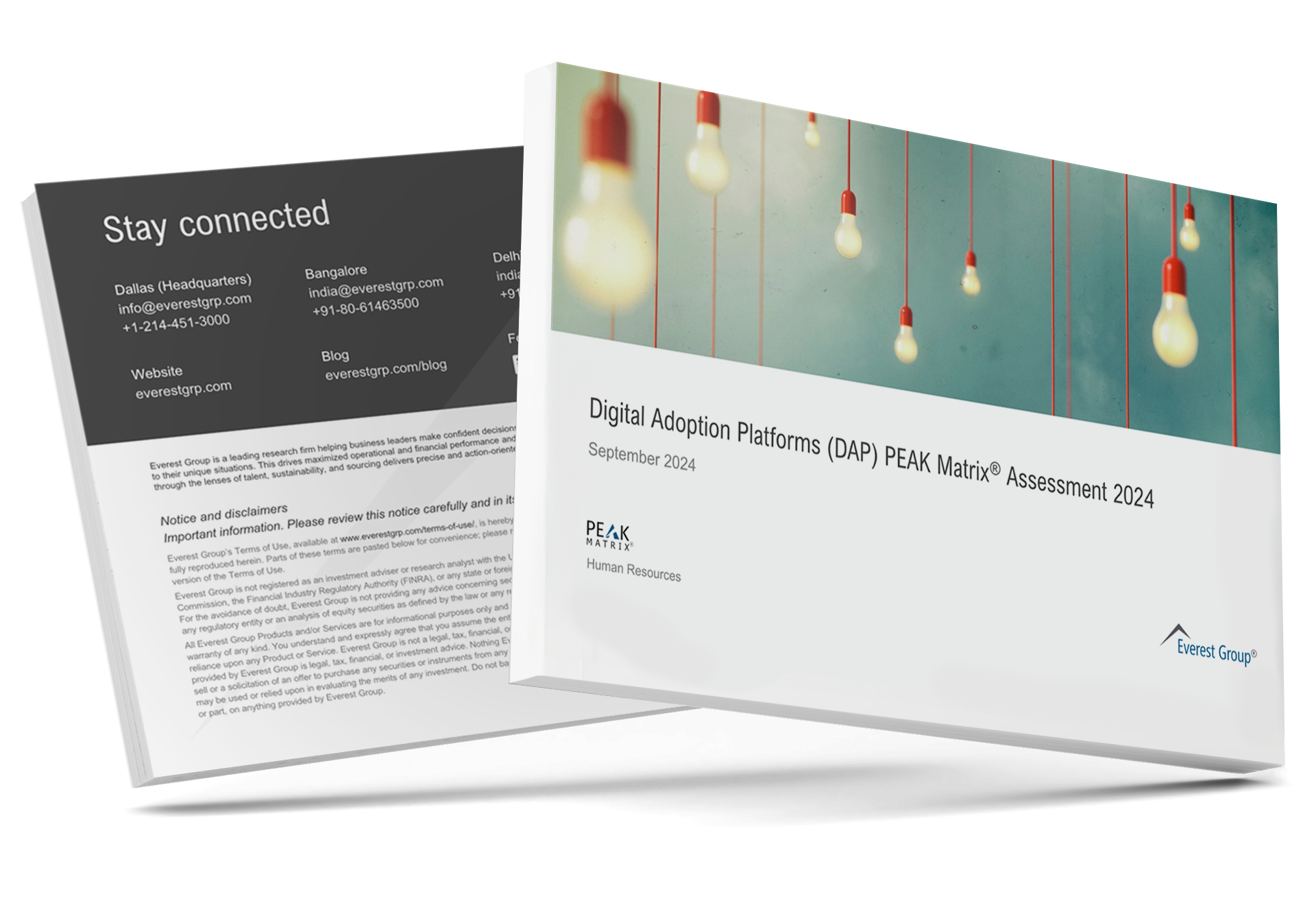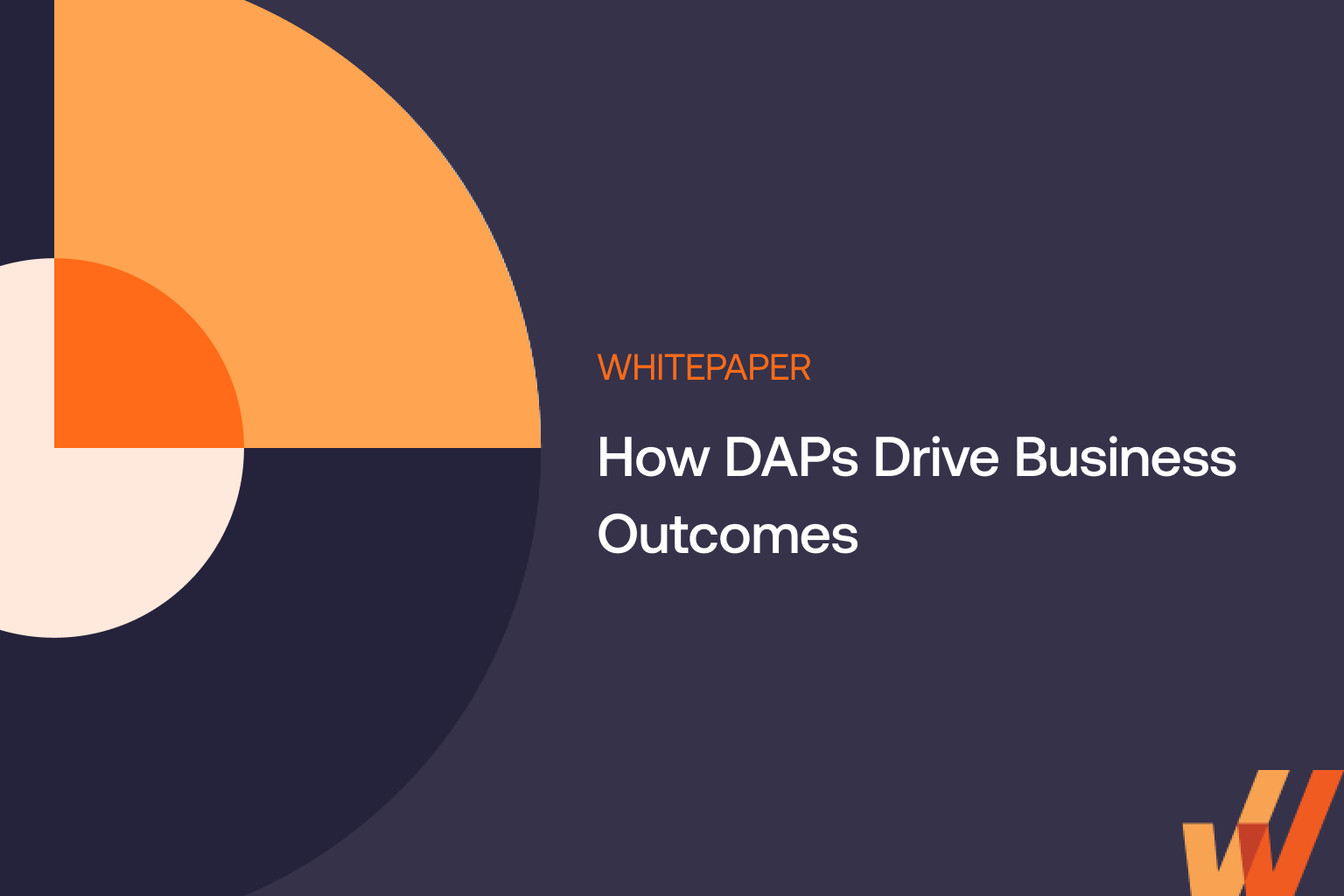Findings from DAP buyers reveal an increased demand for DAP adoption across multiple applications within an enterprise. More than 50% of respondents deploy a DAP on 20+ applications.
SAN JOSE, California, December 9, 2021 — Whatfix, a leader in the digital adoption platforms (DAP) space, today announced the launch of a first-of-its-kind, Buyer’s Guide to Digital Adoption Platforms by Everest Group, a leading research firm. This study surveys digital adoption platform (DAP) buyers to examine the most important capabilities of DAPs for customers, as well as the ROI generated for organizations. Buyers should use this report to assess how their peers have rated various DAP capabilities, the functionalities to look for when choosing a DAP, and how a DAP can empower them to achieve their business objectives.
Everest Group surveyed 90+ global executives from multiple organizations spread across North America, Continental Europe, United Kingdom, Asia Pacific and Central and South America. 72% of the study participants had already invested in a DAP and 28% were in the planning stage of implementing a DAP. Among respondents across various industries, 30% represented small-sized buyers, 48% represented mid-sized buyers, and 22% represented large-sized buyers.
Other key findings from the report include:
- Overall, DAPs exceed expectations: 66% of respondents said that their DAP ROI significantly exceeded their expectations.
- DAPs increased productivity: 76% of respondents reported increased efficiency and time saved through improved user productivity.
- DAPs are used to enhance employee satisfaction: 57% of respondents indicated that improving user experience and user satisfaction scores were a primary goal of their implementation.
- DAP ROI is proportional to the number of DAP applications. More than half of the respondents that have deployed a DAP on 20+ applications have already experienced ROI of more than $1 million.
“The digital adoption platform (DAP) market has grown significantly, driven by the explosion of digital technologies and enterprises’ challenges in adopting them. As per our estimates, the annual spend on DAPs is expected to grow at a rate of ~50% yearly in the near term. During the pandemic, DAP was a support pillar for enterprises to mitigate the business disruptions,” said Sharath Hari N, Practice Director, Everest Group. “Going forward, DAP is no longer a good-to-have. It will be a strategic solution for enterprises to help them address multiple business needs. The feedback on tangible ROI by DAP buyers in this study is a testament to how and why DAP is mandatory for growth.”
When selecting a DAP, organizations identified end-user functionality as the most important vendor capability. Respondents identified in-application guidance as the most essential aspect of end-user functionality, followed closely by the ability to handle different interfaces and platforms. The study showed that enterprises value the flexibility of a DAP that can provide on-demand support at the moment of need, within the flow of work.
“As the usage of software tools come to characterize so much of our working lives, particularly with the rise of remote work, organizations are searching for the best ways to support their people in using essential technologies,” said Khadim Batti, CEO and co-founder of Whatfix. “This survey shows that digital adoption platforms are effective for organizations of all sizes and that DAP is an essential tool for the modern workforce.”
Everest Group is a research firm focused on strategic IT, business services, engineering services, and sourcing, with clients including global enterprises, service providers, and investors.
Download the report here.
About Whatfix
Whatfix is a digital adoption platform that disrupts application training, learning, and support content by providing contextual, interactive, real-time, and automated user guidance – driving additional adoption and productivity gains. Ranked #143 by Deloitte Fast500, Whatfix has a proven record of increasing employee productivity by 35%, reducing training time and costs by 60%, reducing employee case tickets by 50% and increasing application data accuracy by 20%. Whatfix is based in San Jose, London, Melbourne, Sydney and Bangalore.
Media contact:
Fay Li
Lumina Communications for Whatfix
[email protected]

